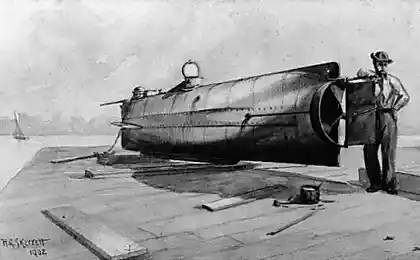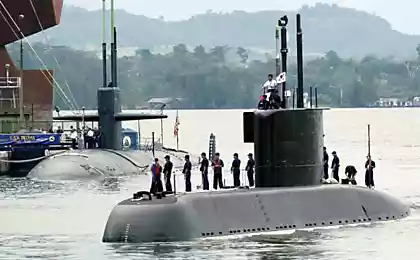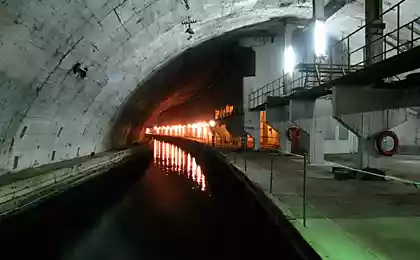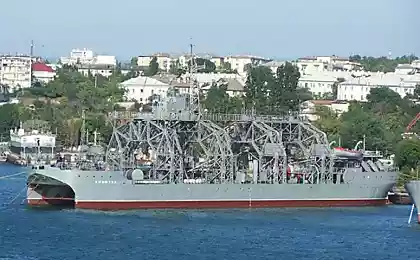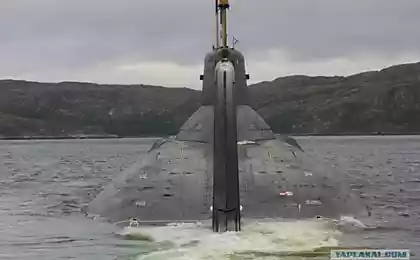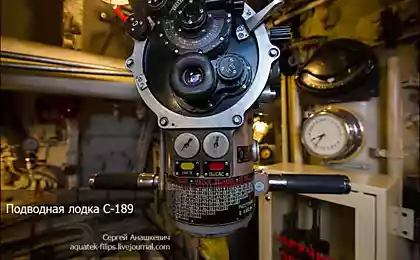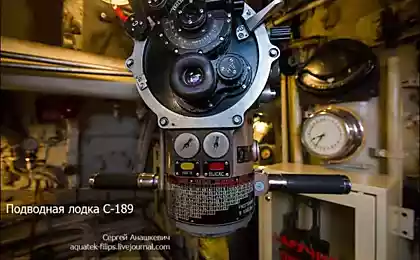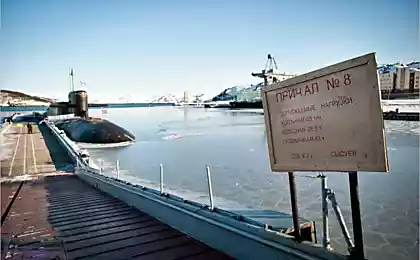922
825. Object walk through the submarine base in
In the once secret facility now houses a museum of the Cold War.
This facility - a unique and the largest on the planet a strategic military facility declassified.
- "Object 825 GTS", which is officially called the city's telephone exchanges (and in fact - of hydraulic CAnti-caving facility) - the so-called documents this complex conceived by Stalin as the construction of anti-nuclear defense of the first category, which could be based submarines for a retaliatory nuclear strike .
Will be 23 photos.
Login for boats from the bay.
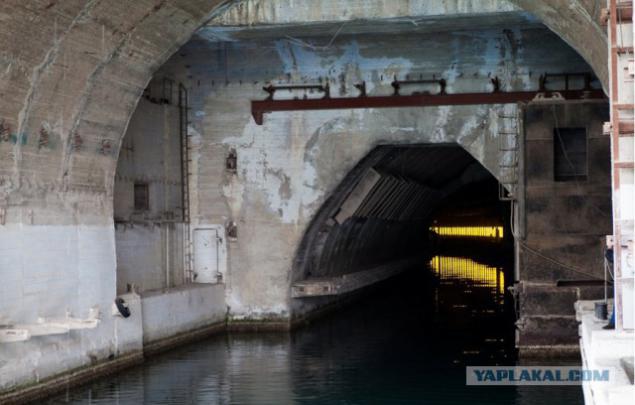
During the construction of the base has been selected more than 120 thousand tons of rock that were taken on barges at night so as not to attract attention. Underground Bay could conceal a team of 14 submarines (project 615) and the residents of a small town with a population of three thousand people.
The core of the complex was a tunnel length of 608 m. The combined passage extending through the mountain, allows you to place seven submarines of 613 and 633 projects. The depth of the channel reaches 8 m, width ranges from 8 to 12 meters. The total area of the factory premises more than 5000 square meters, the subterranean water surface area is 3000 sq.m.
It was assumed that the submarine entered quietly, under water, in the bay, had to channel to get into the complex, and after the repair and resupply of weapons as unnoticed and on the other side back out to sea to carry out combat missions.
Erected the secret facility for ten years (1953 to 1963). Not only military construction of the Black Sea Fleet, but also peace metrostroevtsy from Moscow, Leningrad, Kiev and Tbilisi. All builders have signed non-disclosure agreement, just had to keep military secrets and all the inhabitants of Sevastopol and Balaklava, designed to work "on a strategic object».
There are still secret documents about who designed the plant, how much money was spent on its construction. According to the museum staff, all information will be available no earlier than 50 years.
Carrying out technical functions, this underground facility was to be in the event of a nuclear attack and sufficiently serious bomb shelter for submarines and for 1, 5 thousand. Service personnel along with residents of the village (in offline mode, that is, with its lighting and ventilation, as well as the necessary supply of food, drink and medicine, people can stay here for up to 30 days).
Specially designed wall thickness in some places up to three meters (!), Had to withstand the impact, if necessary, at least stokilotonnoy atomic bomb; inside it has also been provided for several anti-nuclear barrages. Naturally, the input and output, are in different places, in order to disguise were so cleverly arranged that they could not be seen either when entering the bay or from the opposite bank.
The gates to the underground corridor (called Poterna), were made of expensive aluminum-titanium alloy. Each of the leaf weighing 10 tonnes and to open a special hydraulic drive. Once and for all established, the gate could neither withdraw nor understand - and that fortunately, since only so they still stand tselehonkim. Opens the gate only by order and only pass of vehicles, mostly at night. First submarine coming to him secretly, under water. Then, using special mechanisms half a meter up a pontoon bridge and led away, freeing the way down the channel. Open the gate. In the bowels of the boat expecting another 150-ton electric barrier, and just behind him I was already in the dock length of 102 m, which is then in a few hours is pumped seawater. The boat was getting on the stocks, and repair crews can get to work.
After repairs are completed canal was filled with water again, and the submarine was sent to the output of the neck of the bay.
All the secret activities of the plant lasted no less than nearly 30 years, and only with the collapse of the Soviet Union in 1991, ended ingloriously. When the last of the Russian submarine fleet left the Balaklava Bay, began dismantling the object №825, which lasted until 1994, after which the security has been removed from the facility, and all that was left was actually given to plunder.
In 2004 alone, the facility was placed under the protection of the Ministry of Interior, and shortly before the June 1, 2003, it was given the status of the museum complex.
On the basis of the surviving underground structures organized exhibitions devoted to the history of the Navy, submarine forces of the Black Sea Fleet of the former Soviet Union, the military and political aspects of the Cold War. With the city's open areas along the underground channel, the former departments of the factory and an arsenal that held torpedoes and nuclear warheads. Presented models of warships, models of equipment and armaments.
I can not say that the exhibition itself has some unique value. The naval museum in St. Petersburg and Sevastopol, of course, have a valuable exhibits. But this place can not be compared with anything. Striking out facilities. The resources spent on its construction, defy imagination. The monument of the Cold War is full of greatness and doom that is common to all such places. The official version of the closure of the plant, "lost importance as a military facility in connection with the rearmament of the Navy." Dimensions of modern boats do not allow them to fit in the channels of repair facilities. By the way, nuclear submarines in the Black Sea Fleet has never been in the store had only nuclear ammunition.
Currently Balaklava near Sevastopol is open to all. Now in its bay, in addition to the Ukrainian border boats are beautiful yachts. The existence of a secret repair facilities resemble only pictures and museum complex.
Driving base!
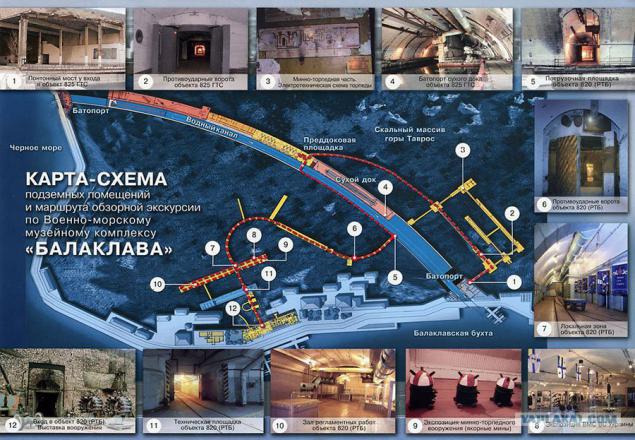
Vagonenki, tripod, pneumatic hammer - tools builders object.

Tunnels are protected by shock-proof gate.
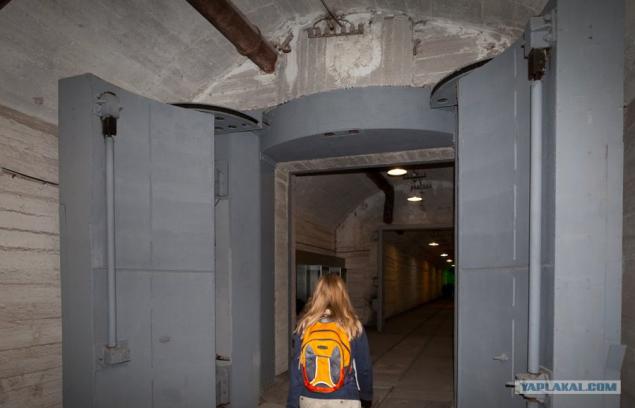
The tunnels - branches to supply equipment to the combat submarine, which was in the dock.
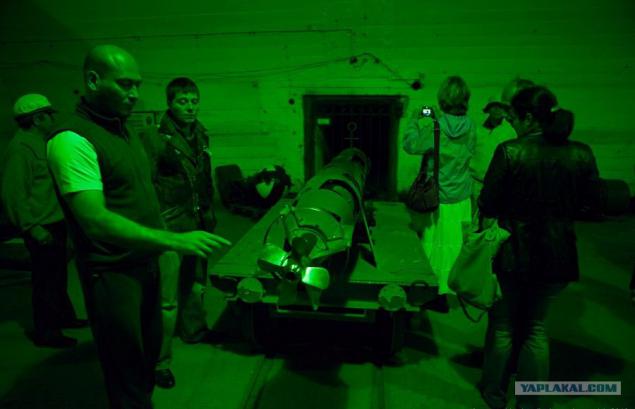
The museum visited by many foreign tourists aged - to see firsthand how these torture chambers was the Cold War.
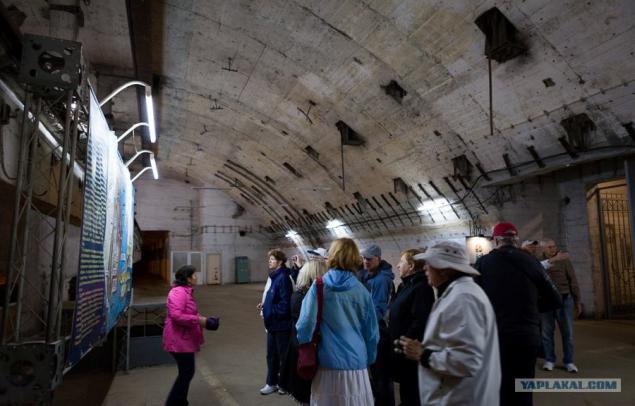
Drydock could hold up to 2 submarines simultaneously. There were repairs for Soviet submarines 613th and 633rd projects.
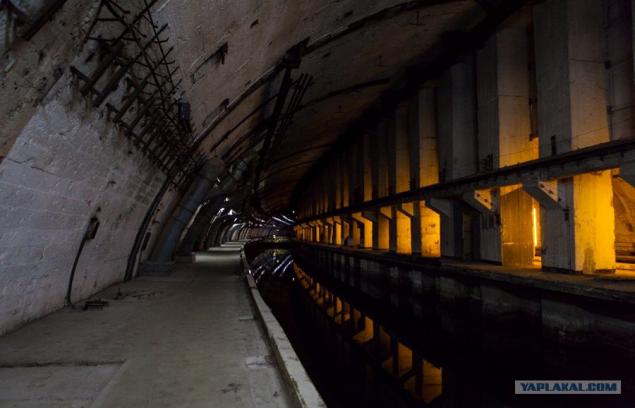
Walk on water channel highlights by yellow fluorescent lamps - the guide suggests that they were used in the shooting of a feature film, and left.

Log in dry dock by the bay. It is guarded by two dummy in UGC.
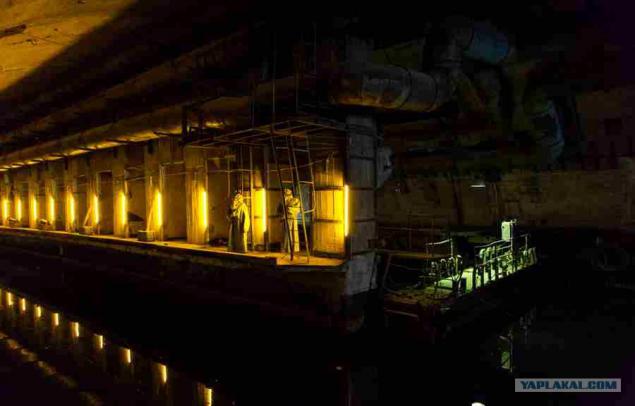
Entrance to the arsenal.

Layout "Inquiring" - patrol ship project 1135M.
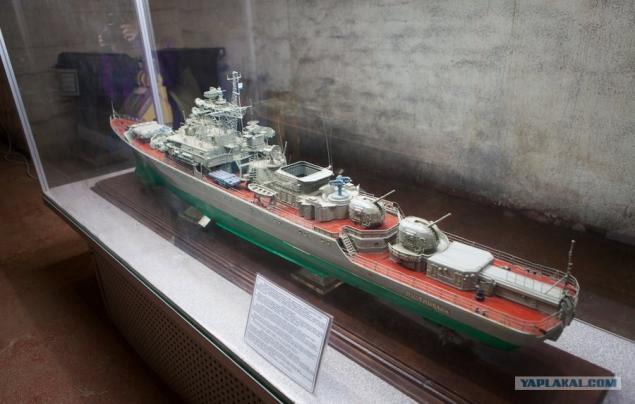
Engine Telegraph twin-screw surface ship.
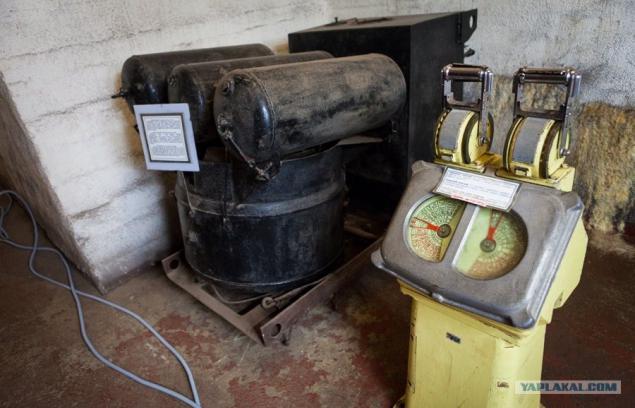
The warheads were transported on trucks. One such truck weighs 996 kg, the carrying capacity of 7 tons and moved manually.
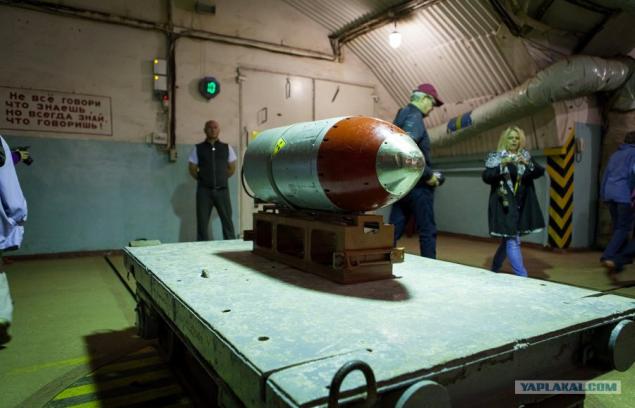
The greatest armory room with a working area of 300 square meters. m.
Posted in [mergetime] 1386049662 [/ mergetime]
One way to the arsenal. With red illumination looks cosmic.

One way to the arsenal. With red illumination looks cosmic.
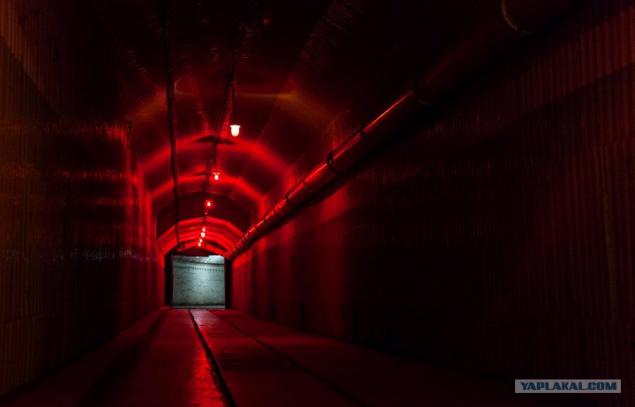
The exhibition is presented arsenal my favorite Soviet machinery control systems that I liked when he was still a student in the study of remote control air defense radars.
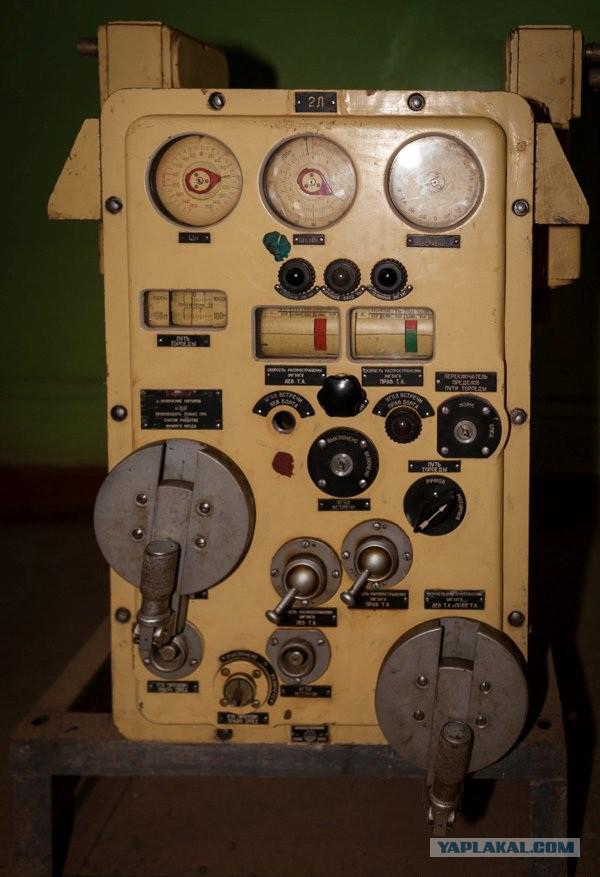
Do not touch.
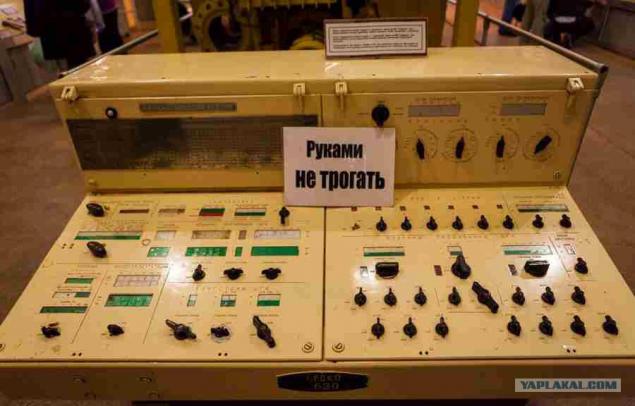
Luke and out of the bay - it was.
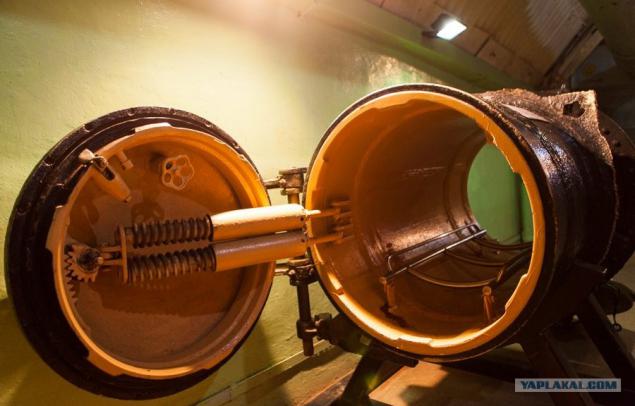
The ventilation system of the object.
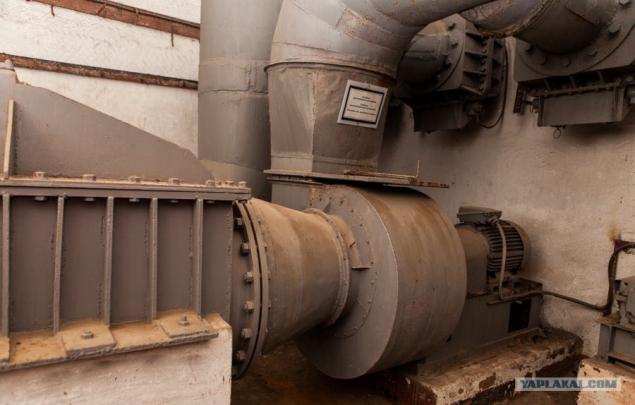
At the exit from the database - a small fleet of engines. This is - a gas turbine engine to-63.

Once again the scheme
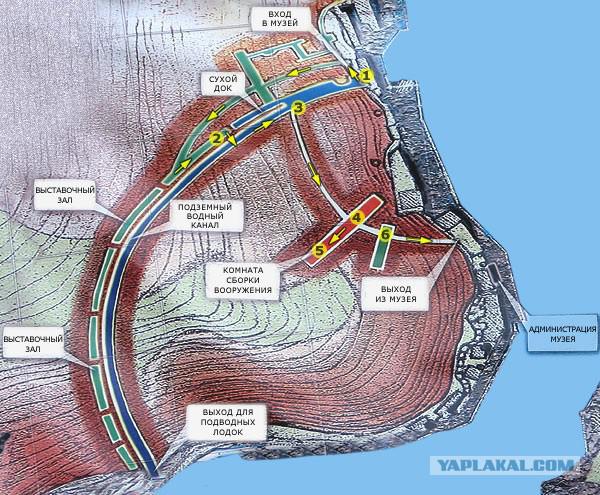
General form!

Here
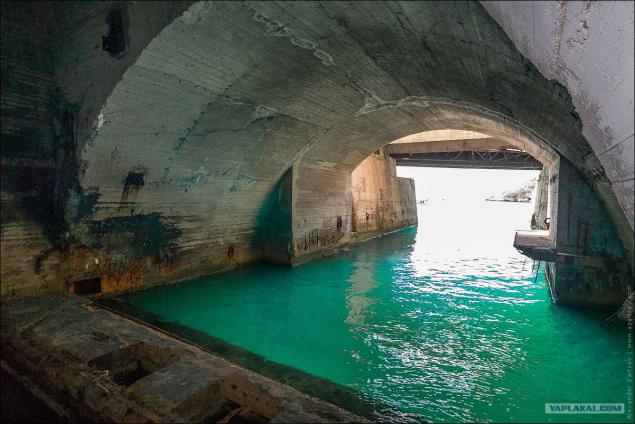
Naval base of the Black Sea Fleet Balaklava bay began before the war, it housed 155 Brigade submarines. Comfortable and well-proven in the years of the Great Patriotic War Balaklava Bay after winning military experts were intended to use for servicing submarines Black Sea Fleet. The development of this project as soon as a secret object was assigned the Leningrad Institute "Granit". In the early 1950s it began a large-scale construction of an underground facility the first category of anti-nuclear stability. The complex area of 10 square kilometers carved in the mountain, towering 120 meters above the western shore of the bay.

Source:
This facility - a unique and the largest on the planet a strategic military facility declassified.
- "Object 825 GTS", which is officially called the city's telephone exchanges (and in fact - of hydraulic CAnti-caving facility) - the so-called documents this complex conceived by Stalin as the construction of anti-nuclear defense of the first category, which could be based submarines for a retaliatory nuclear strike .
Will be 23 photos.
Login for boats from the bay.

During the construction of the base has been selected more than 120 thousand tons of rock that were taken on barges at night so as not to attract attention. Underground Bay could conceal a team of 14 submarines (project 615) and the residents of a small town with a population of three thousand people.
The core of the complex was a tunnel length of 608 m. The combined passage extending through the mountain, allows you to place seven submarines of 613 and 633 projects. The depth of the channel reaches 8 m, width ranges from 8 to 12 meters. The total area of the factory premises more than 5000 square meters, the subterranean water surface area is 3000 sq.m.
It was assumed that the submarine entered quietly, under water, in the bay, had to channel to get into the complex, and after the repair and resupply of weapons as unnoticed and on the other side back out to sea to carry out combat missions.
Erected the secret facility for ten years (1953 to 1963). Not only military construction of the Black Sea Fleet, but also peace metrostroevtsy from Moscow, Leningrad, Kiev and Tbilisi. All builders have signed non-disclosure agreement, just had to keep military secrets and all the inhabitants of Sevastopol and Balaklava, designed to work "on a strategic object».
There are still secret documents about who designed the plant, how much money was spent on its construction. According to the museum staff, all information will be available no earlier than 50 years.
Carrying out technical functions, this underground facility was to be in the event of a nuclear attack and sufficiently serious bomb shelter for submarines and for 1, 5 thousand. Service personnel along with residents of the village (in offline mode, that is, with its lighting and ventilation, as well as the necessary supply of food, drink and medicine, people can stay here for up to 30 days).
Specially designed wall thickness in some places up to three meters (!), Had to withstand the impact, if necessary, at least stokilotonnoy atomic bomb; inside it has also been provided for several anti-nuclear barrages. Naturally, the input and output, are in different places, in order to disguise were so cleverly arranged that they could not be seen either when entering the bay or from the opposite bank.
The gates to the underground corridor (called Poterna), were made of expensive aluminum-titanium alloy. Each of the leaf weighing 10 tonnes and to open a special hydraulic drive. Once and for all established, the gate could neither withdraw nor understand - and that fortunately, since only so they still stand tselehonkim. Opens the gate only by order and only pass of vehicles, mostly at night. First submarine coming to him secretly, under water. Then, using special mechanisms half a meter up a pontoon bridge and led away, freeing the way down the channel. Open the gate. In the bowels of the boat expecting another 150-ton electric barrier, and just behind him I was already in the dock length of 102 m, which is then in a few hours is pumped seawater. The boat was getting on the stocks, and repair crews can get to work.
After repairs are completed canal was filled with water again, and the submarine was sent to the output of the neck of the bay.
All the secret activities of the plant lasted no less than nearly 30 years, and only with the collapse of the Soviet Union in 1991, ended ingloriously. When the last of the Russian submarine fleet left the Balaklava Bay, began dismantling the object №825, which lasted until 1994, after which the security has been removed from the facility, and all that was left was actually given to plunder.
In 2004 alone, the facility was placed under the protection of the Ministry of Interior, and shortly before the June 1, 2003, it was given the status of the museum complex.
On the basis of the surviving underground structures organized exhibitions devoted to the history of the Navy, submarine forces of the Black Sea Fleet of the former Soviet Union, the military and political aspects of the Cold War. With the city's open areas along the underground channel, the former departments of the factory and an arsenal that held torpedoes and nuclear warheads. Presented models of warships, models of equipment and armaments.
I can not say that the exhibition itself has some unique value. The naval museum in St. Petersburg and Sevastopol, of course, have a valuable exhibits. But this place can not be compared with anything. Striking out facilities. The resources spent on its construction, defy imagination. The monument of the Cold War is full of greatness and doom that is common to all such places. The official version of the closure of the plant, "lost importance as a military facility in connection with the rearmament of the Navy." Dimensions of modern boats do not allow them to fit in the channels of repair facilities. By the way, nuclear submarines in the Black Sea Fleet has never been in the store had only nuclear ammunition.
Currently Balaklava near Sevastopol is open to all. Now in its bay, in addition to the Ukrainian border boats are beautiful yachts. The existence of a secret repair facilities resemble only pictures and museum complex.
Driving base!

Vagonenki, tripod, pneumatic hammer - tools builders object.

Tunnels are protected by shock-proof gate.

The tunnels - branches to supply equipment to the combat submarine, which was in the dock.

The museum visited by many foreign tourists aged - to see firsthand how these torture chambers was the Cold War.

Drydock could hold up to 2 submarines simultaneously. There were repairs for Soviet submarines 613th and 633rd projects.

Walk on water channel highlights by yellow fluorescent lamps - the guide suggests that they were used in the shooting of a feature film, and left.

Log in dry dock by the bay. It is guarded by two dummy in UGC.

Entrance to the arsenal.

Layout "Inquiring" - patrol ship project 1135M.

Engine Telegraph twin-screw surface ship.

The warheads were transported on trucks. One such truck weighs 996 kg, the carrying capacity of 7 tons and moved manually.

The greatest armory room with a working area of 300 square meters. m.
Posted in [mergetime] 1386049662 [/ mergetime]
One way to the arsenal. With red illumination looks cosmic.

One way to the arsenal. With red illumination looks cosmic.

The exhibition is presented arsenal my favorite Soviet machinery control systems that I liked when he was still a student in the study of remote control air defense radars.

Do not touch.

Luke and out of the bay - it was.

The ventilation system of the object.

At the exit from the database - a small fleet of engines. This is - a gas turbine engine to-63.

Once again the scheme

General form!

Here

Naval base of the Black Sea Fleet Balaklava bay began before the war, it housed 155 Brigade submarines. Comfortable and well-proven in the years of the Great Patriotic War Balaklava Bay after winning military experts were intended to use for servicing submarines Black Sea Fleet. The development of this project as soon as a secret object was assigned the Leningrad Institute "Granit". In the early 1950s it began a large-scale construction of an underground facility the first category of anti-nuclear stability. The complex area of 10 square kilometers carved in the mountain, towering 120 meters above the western shore of the bay.

Source:

